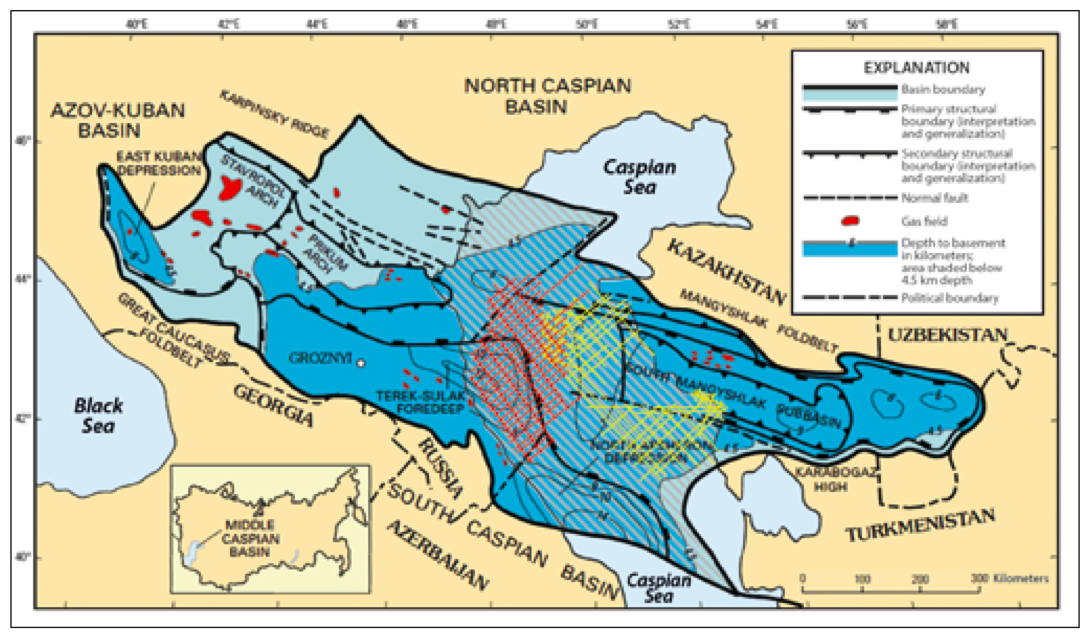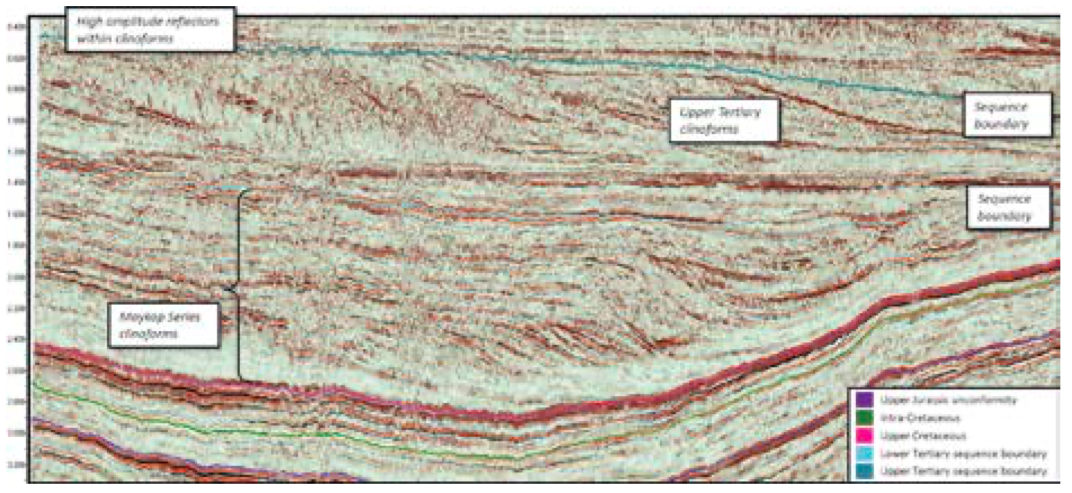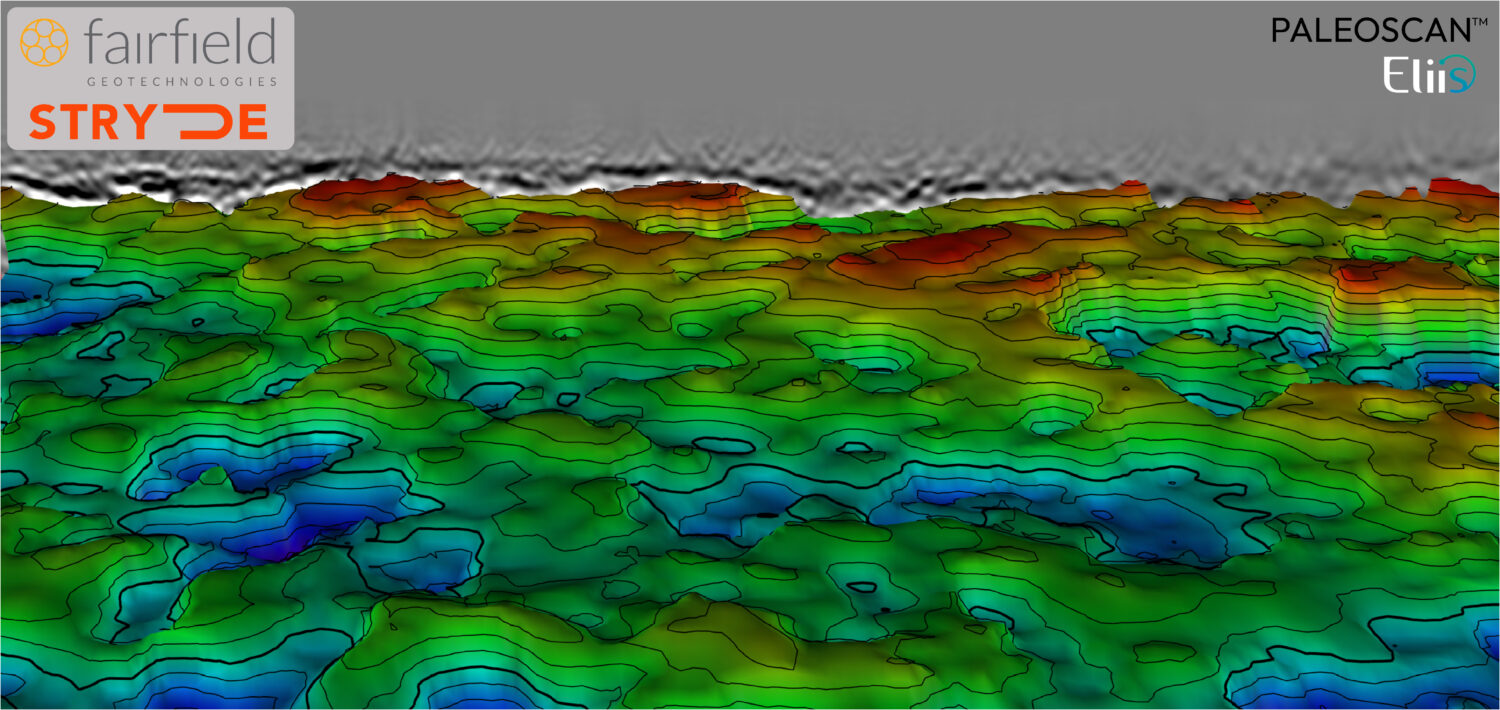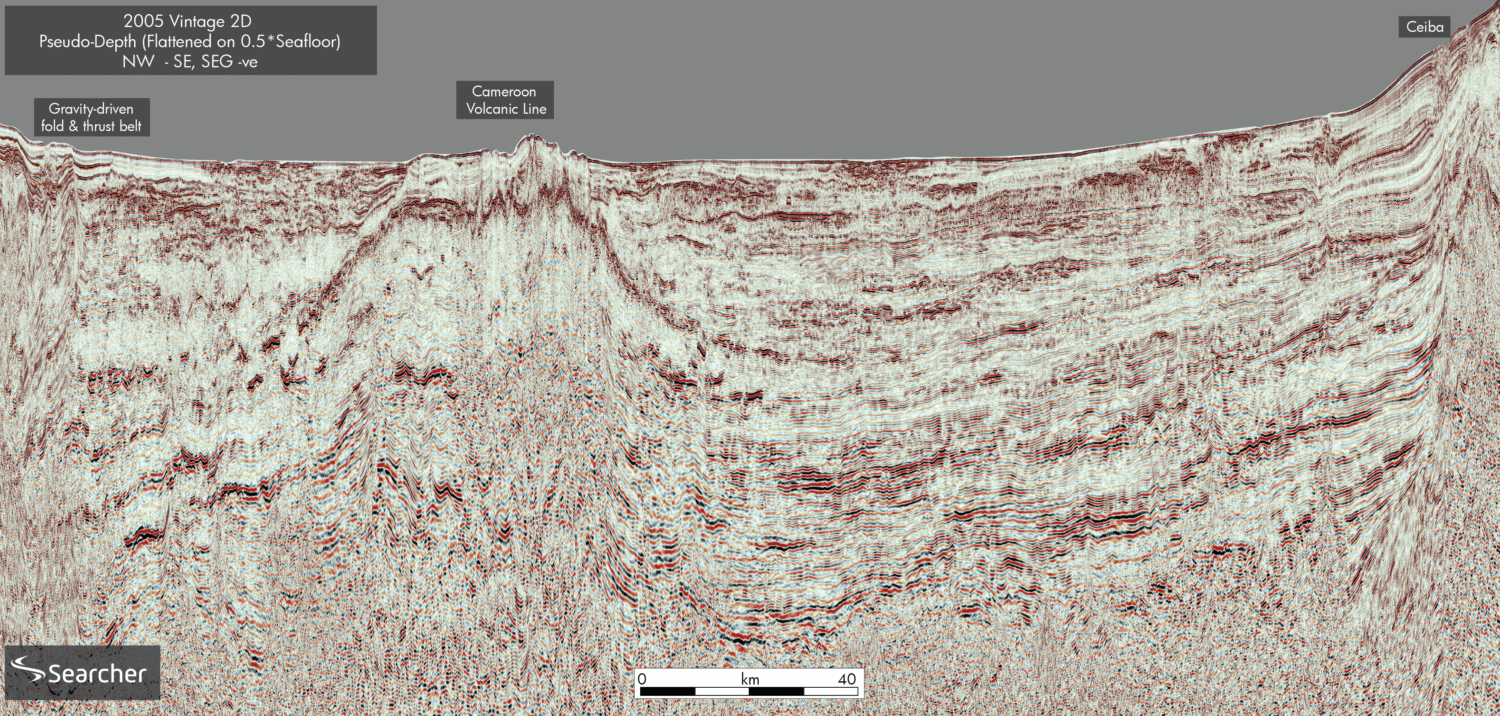
Potential in the middle Caspian basin
CGG multi-client 2D seismic data across the Central Caspian Sea helps provide understanding of current and new petroleum systems in a frontier area.
The Middle Caspian Basin extends onshore into parts of Russia and Azerbaijan, with the offshore section in Russia and Kazakhstan. In terms of structural geology, the basin is bounded by the Great Caucasus fold belt on the west and south-west, and the Karabogaz regional basement high on the east and south-east. The northern boundary of the basin extends along the Karpinsky ridge and the Mangyshlak fold belt. The west area of the basin is a typical foreland basin whereas the eastern area is situated on a shallow crustal block between two areas of uplift (Figure 1). Rifting of Hercynian basement occurred during the Late Permian to Triassic and led to the infill of basinal lows with thick clastics and carbonates. Volcanism followed in the Late Triassic, with a period of compression resulting in uplift and erosion of rifted blocks. The basin in the east underwent strong deformation during that period, with thrusting and folding forming the Mangyshlak fold belt. From Jurassic to Eocene the western area of the basin became a passive margin, with continental and marine environments making up the Cretaceous and Tertiary section (Ulmishek, 2001).
Exploration history
Approximately 14 Bboe have been discovered in the Middle Caspian Basin, with primary reservoirs consisting of Jurassic and Cretaceous rocks, while secondary reservoirs are found within the Tertiary. The first discovery in the Middle Caspian Basin encountered shallow oil within the Middle Miocene sandstones from the Russian sector in 1893. Notable onshore discoveries in Kazakhstan began in the 1950-60s, comprising Tenge (119 MMbo and 810 Bcf), Uzen (1.5 Bbo) and Dunga (408 MMbo). Most of the Middle Caspian Basin’s discoveries trend along the South Mangyshlak Sub-basin in a south-easterly direction.

A small number of wells were tested in the offshore region of Kazakhstan but no discoveries were made.
The first offshore oil and gas field was encountered in 1974 near shore in Russia. Other onshore and offshore discoveries in Russia include Khvalynskoye (127 bcm and 9.6 million tonnes of gas condensate), Yuri Korchagin (570 MMboe) and Tsentralnoye (98 MMboe), which is a shared discovery between Russia and Kazakhstan.
Seismic stratigraphy
Seismic data clearly illustrates that sediment thickness varies considerably from west to east, due to basin architecture and heterogeneities. In the deeper section from basement to base Jurassic, clear rift features can be seen; faulted basement blocks are present with deep graben infill of Triassic sediments. Evidence of compression and volcanism can be seen in this section through deep folds and strong amplitude seismic reflections within the South Mangyshlak Sub-basin. Seismic data offshore Kazakhstan shows Jurassic strata directly overlying basement blocks, indicating areas where the Triassic is absent.

The base Jurassic is marked by an angular unconformity, which is a prominent basin-wide marker indicating the interface between the top of the rift sequence and the base of the post-rift section (Figure 2). It is a significant event representing the transition from continental to marine environment and a period of basinal subsidence and quiescence which dominated from the Jurassic period. The Jurassic section thins and becomes shallower to the east with the top of the sequence marked by another unconformity. The Cretaceous section is a thin, uniform and fairly undeformed section only partially affected by faulting. The Lower Cretaceous is thought to be siliciclastic-rich, especially within the Aptian and Albian, and the Late Cretaceous is dominated by a carbonate sequence. The Late Cretaceous has been significantly eroded, as deep incised canyons (up to 300m) are observed as a result of large-scale erosion during the Tertiary.

The Maykop Series marks the base of the Tertiary sequence. Large-scale clinoforms are evident with chaotic reflectivity at the base, indicative of debris flows and slump deposits such as olistostromes, suggesting the possibility of later uplift in the Caucasus region (Figure 3). The Maykop Series is thick
in the west (~1,200m) and thins eastwards to about 600m where it downlaps the underlying Cretaceous section. The top of this sequence is marked by an angular and highly erosive unconformity. A number of sequence boundaries can be interpreted within the shallower Tertiary section, with multiple series of clinoforms prograding mainly towards the south-east (Figure 3). This major series of clinoforms is possibly indicative of a large sediment supply coming from the Great Caucasus Fold belt with the influence of high-magnitude sea level variations.
Areas of potential and undrilled structures
Exploration so far has focused onshore and near shore in the basin, with little information known about the offshore area. One can assume there are analogies to be made between the two parts of the basin when looking at the geology and hydrocarbon potential. Discoveries located in the Great Caucasus Fold Belt consist of structural traps within long and narrow faulted anticlines trending north-west south-east. In Stavropol Arch and Prikum Arch (see map), hydrocarbon accumulations are found in isometric low relief anticlines located over deeper Triassic reef structures or basement highs (Dyman et al., 2001). The permeability and connectivity of many hydrocarbon reservoirs found in that region is thought to be highly dependent on fracturing. This has been observed in Cretaceous carbonates of the South Mangyshlak Sub-basin and fractured Lower Maykop Series shales in the Prikum Arch.
The faults present within the post-rift can be related to significant gas escape features throughout this section. These gas chimneys are located directly above steeply dipping extensional faults at depth and clearly show that a working petroleum system is in place, especially in the less explored central part of the basin. There are a number of structural and stratigraphic traps visible in the underexplored central area of the Caspian Sea. Compressional anticlinal folds in the deeper sections within the Triassic and Jurassic can be considered as major targets with both sequences acting as reservoirs (Figure 2). Potential can also be found within the Tertiary clinoforms, with reservoir porosity and permeability likely to be preserved due to their shallow burial. The presence of a regional seal in this case may be an issue, forcing exploration to be reliant on more localized seals (Figure 3).
References
Dyman, T.S., Litinsky, V. A. and Ulmishek, G. F. (2001). Geology and Natural Gas Potential of Deep Sedimentary Basins in the Former Soviet Union. Chapter 3, U. S. Geological Survey Digital Data Series 67.
Ulmishek, G. F. (2001). Petroleum Geology and Resources of the Middle Caspian Basin, Former Soviet Union. USGS Bulletin 2201-A.




